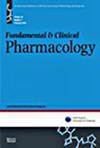Sodium thiosulfate mitigates PM2.5-induced cardiotoxicity by preservation of mitochondrial function
Abstract
Background
Exposure to PM2.5 triggers changes in myocardial structure and function, leading to a decline in the ability of heart to withstand further oxidative stress. This manuscript addresses the absence of a endogenous agent capable of counteracting the cardiac toxicity associated with PM2.5 exposure. Consequently, we investigated the potential of sodium thiosulfate (STS) to elevate thiosulfate levels, given its known antioxidant, anti-inflammatory, metal chelation, and mitochondrial preservation properties, in order to mitigate PM2.5 induced cardiac damage.
Methods
Female Wistar rats were exposed to PM2.5 (250 μg/m3) for 3 hours daily for 21 days, after which their hearts were excised and mounted on Langendorff apparatus for ischemia-reperfusion (IR) induction. We implemented both preventive and curative investigation protocols for STS: the preventive group received STS thrice weekly for 3 weeks during the exposure regimen, while the curative group received STS after 21 days of PM2.5 exposure for 3 weeks (thrice per week).
Results
Treatment with STS exhibited cardioprotective potential against the detrimental effects of PM2.5 exposure, as evidenced by improved cardiac hemodynamic performance, reduced tissue damage, attenuation of structural remodeling associated with hypertrophy and fibrosis, and a significant reduction in metal deposition. Moreover, it demonstrated an ability to enhance the resilience against IR. Cellular and subcellular level analyses revealed improved mitochondrial function. The protective efficacy of STS was more significant when administered as a preventive measure compared to its curative application.
Conclusion
In summary, our results indicate that STS effectively alleviates PM2.5-induced toxicity due to its antioxidative, metal-chelating, and preservation of mitochondrial function capabilities.

 求助内容:
求助内容: 应助结果提醒方式:
应助结果提醒方式:


